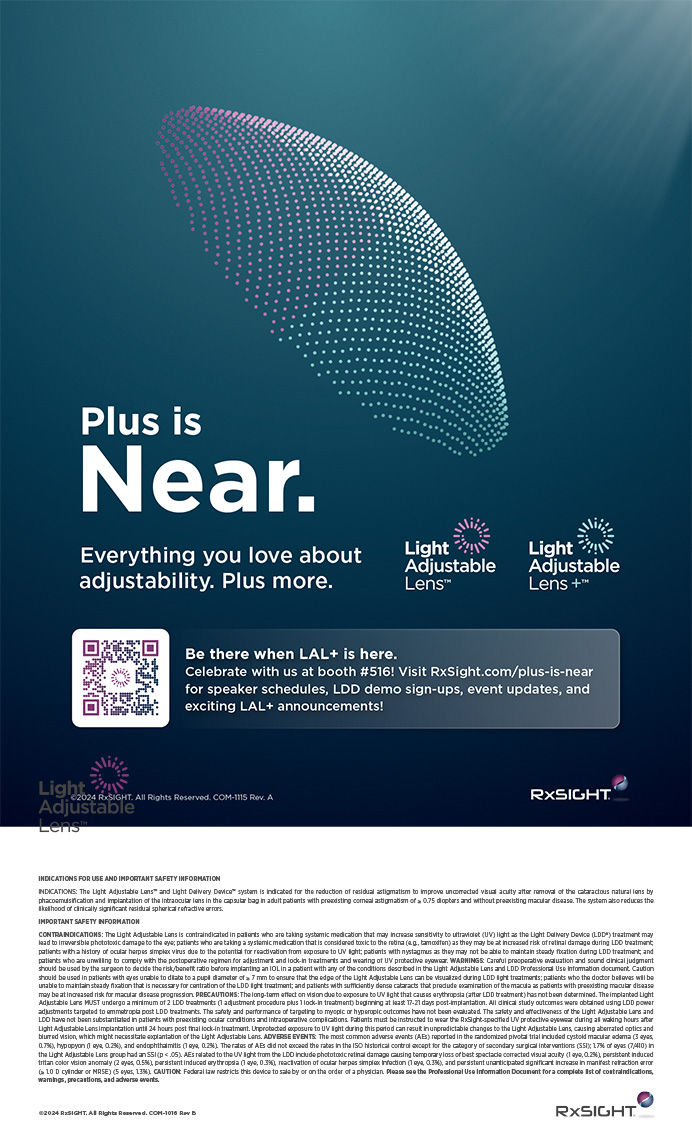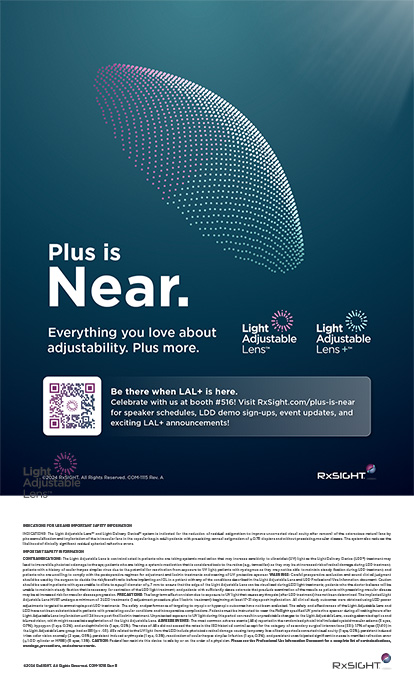
Recently, our practice decided to begin offering laser cataract surgery to our patients. Before implementing the new service, we understood that it would be important to get the entire practice on board with the new platform and to make sure that everyone understood what we were doing and why.
There are several components to successfully launching a new service in your practice, many of which are not taught in medical school. During training, doctors learn surgical technique but not a lot about the business end of running a practice. With more than 2 years under our belts, I think my colleagues and I can now identify things that we did upfront that helped us and other things we could have done to help us even more. Here are our top five criteria to consider when launching a new service offering in your practice.
No. 1. PHYSICIANS
The first barrier you will have to overcome is the physicians in your practice environment. Some will have a negative bias toward new technology. Some will think cost is an issue and wonder how much better the technology is, some will think the increases in OR time will set them back, and others will be comfortable with how they have been performing procedures up to now. To unite the team, I recommend having them visit an ophthalmologist who is currently performing laser cataract surgery. If possible, shadow the surgeon when he or she is evaluating patients, working with staff in the OR, and seeing patients postoperatively. After watching a surgeon in the OR, most likely, any perception of laser cataract surgery as more time consuming will dissipate.
Once the surgeons agree to proceed, the next move is to decide whether to purchase a laser or to have a mobile laser brought into the OR in a roll-in/roll-out fashion. Some factors to consider include the costs of purchasing, maintaining, and keeping the equipment up to date; the space for the equipment; and the expense and demands related to hiring and training staff to help run the laser. Will it require a major remodeling of your ORs? Of course, patients’ acceptance is also an important consideration.
If the mobile concept is your decision, you can test the procedure’s adoption in your market and integrate laser technology with minimal capital outlay. This allows you to offer the technology to patients who want or demand it. For the laser cataract platform addition in our practice, our team agreed that it would be in the practice’s best interest if we partnered with Sightpath Medical, which brings a LenSx Laser (Alcon) and a certified engineer to us on case days. With this platform, we can keep the patient on the same stretcher from the start of the laser portion until the completion of the entire case. We were concerned about an increased risk of falls or injury and more operative time if patients had to move from the stretcher to the femtosecond laser platform and back. Restricting the movement of patients has had a positive effect on our flow in the OR. Customer service, reliability, and available OR space were the main reasons we chose a mobile laser provider.
No. 2. STAFF
Getting the staff on board with new technology is a key part of the transition. We have more than 60 staff members and doctors, so we scheduled times for all of them to see the laser firsthand. This effort generated significant enthusiasm for the platform and continues to be helpful when patients ask the staff questions. Surgery schedulers and technicians went to the ORs first, followed by the remainder of the staff during a 2- to 4-week period. Although surgeons in the practice may understand the procedure and its benefits, it is up to them to communicate those benefits effectively to the rest of the staff. Such understanding will help staff members feel comfortable promoting a premium upgrade such as laser cataract surgery.
No. 3. CONSISTENCY
Once the staff is enthusiastic about the new technological offering, it is important to make sure that they speak about the procedure in a consistent manner. Providing a list of key phrases and expectations for use, identifying the way your practice will refer to the procedure, and offering concise educational materials for patients will go a long way toward creating a unified message. Although it is not specifically everyone’s job to know all of the procedure’s details, enabling the staff to answer some basic questions can be helpful. Using consistent messaging will also help eliminate patients’ confusion and make your team cohesive. Patient education materials for a premium service should have a premium look and may require an initial investment, but they will likely reward your practice with higher conversion and satisfaction rates.
No. 4. CONSULTATION
Clearly discuss options with each patient. Our “menu” gives patients one of four choices. The first three options are laser surgery packages with multifocal, toric, and monofocal lens choices. The fourth option is standard cataract surgery with a monofocal lens. It is crucial that the surgeon be willing to discuss these options and their associated costs with every patient. Be sure to allow patients ample time to review each option and ask questions to learn how they will affect his or her lifestyle and desired outcome.
No. 5. PAYMENT
Billing and collections are an important aspect of new offerings. Patients may need financing opportunities to choose a high-tech procedure. Offering services such as CareCredit or Alpheon Credit can help make the procedure affordable and may increase your conversion rates. When possible, avoid making assumptions about a patient’s ability to pay for a premium service, and give every patient an equal opportunity to choose the type of procedure he or she desires.
CONCLUSION
There are many things to think about when adding new technology to your practice’s offerings. Carefully considering each of these factors prior to launch benefitted our practice and can do the same for yours. These suggestions are based on my recent experience with laser cataract surgery, but they could easily apply to any premium or elective services. n
Donald M. Downer, MD
• ophthalmologist specializing in cornea, refractive cataract surgery, and external diseases at Clay Eye Physicians & Surgeons, with offices in Fleming Island, Orange Park, Mandarin, and Riverside, Florida
• (904) 272-2020; ddowner@clayeye.com; www.clayeye.com
• financial interest: none acknowledged


